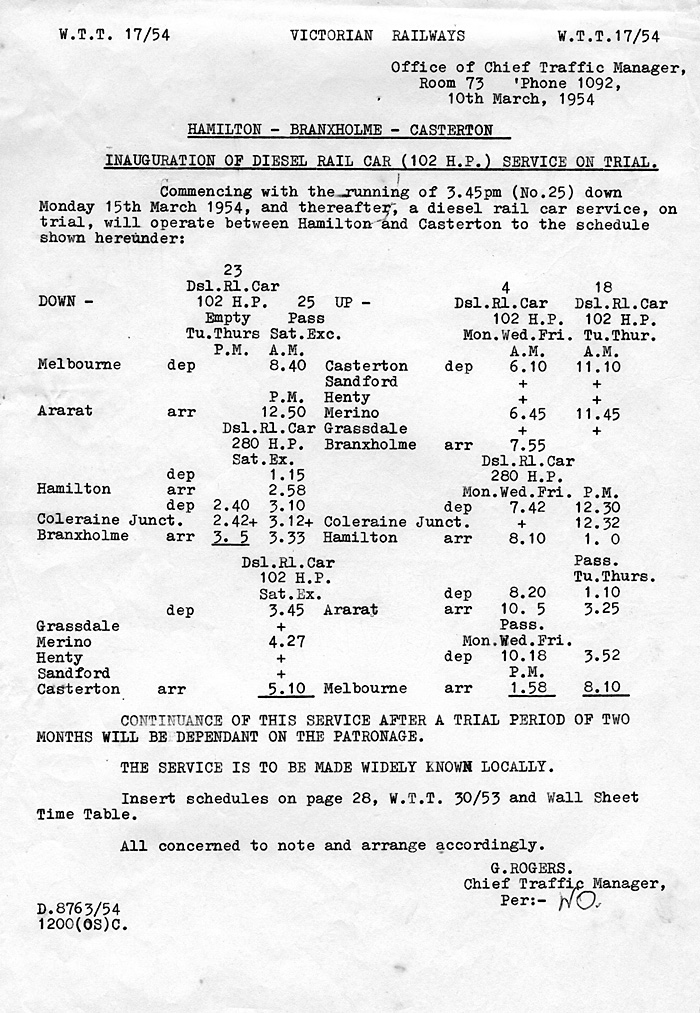Casterton Line
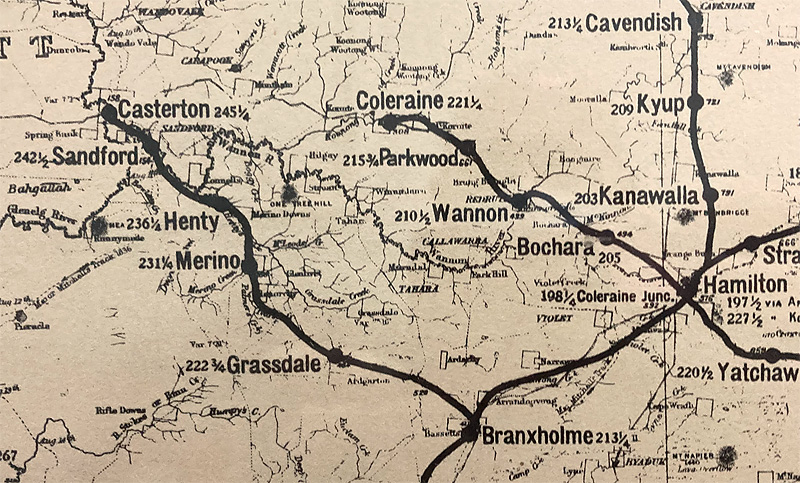
Branxholme to Henty was opened Feb 15 1884 (23.19 miles)
Henty to Casterton was opened Sept 1 1884. (8.9 miles)
The entire line was closed Sept 12 1977.
Casterton water plan 1969 (courtesy Phil Dunn)
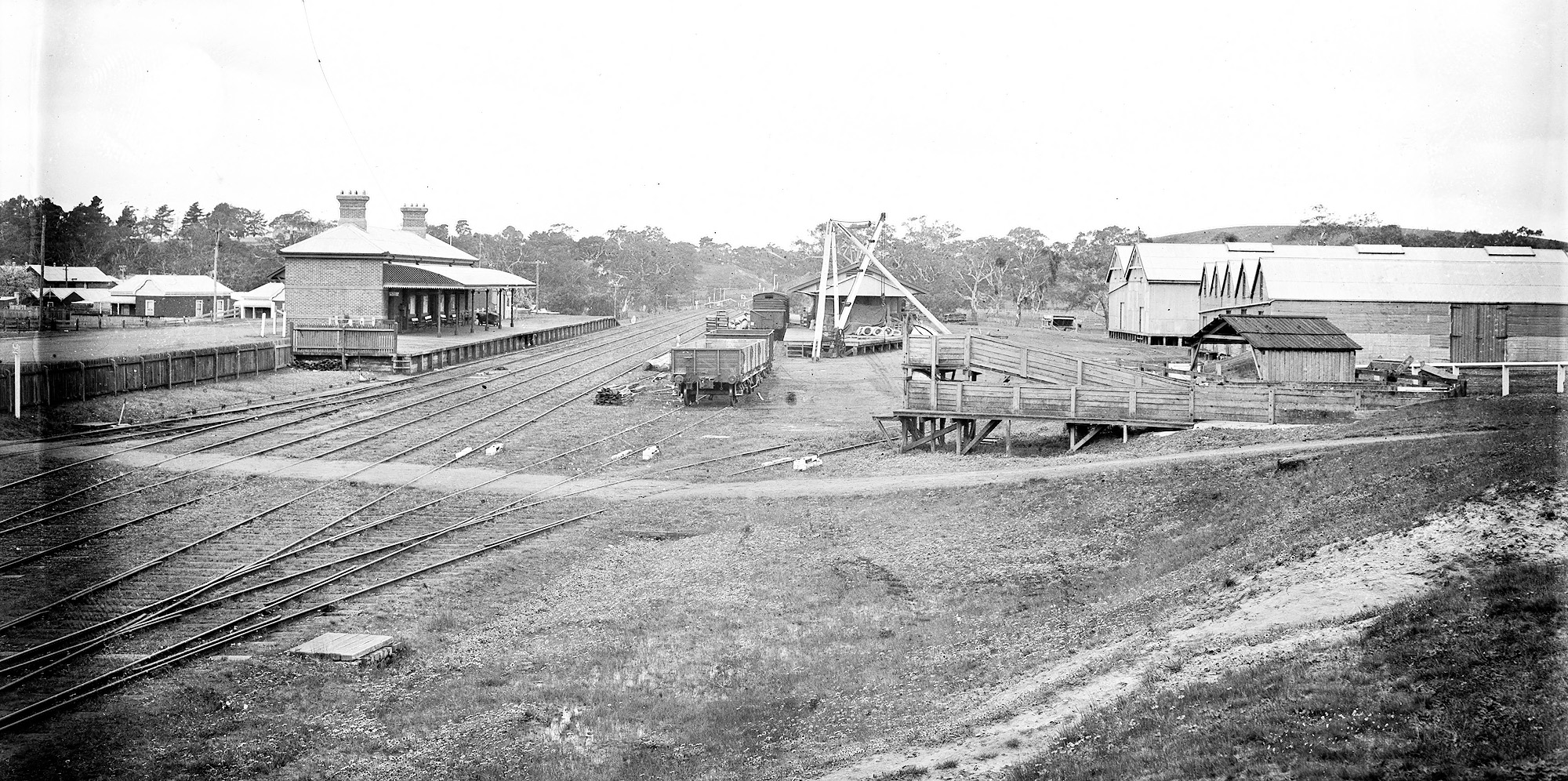
ABOVE: Casterton yard, looking east, circa 1930. (SLV collection)
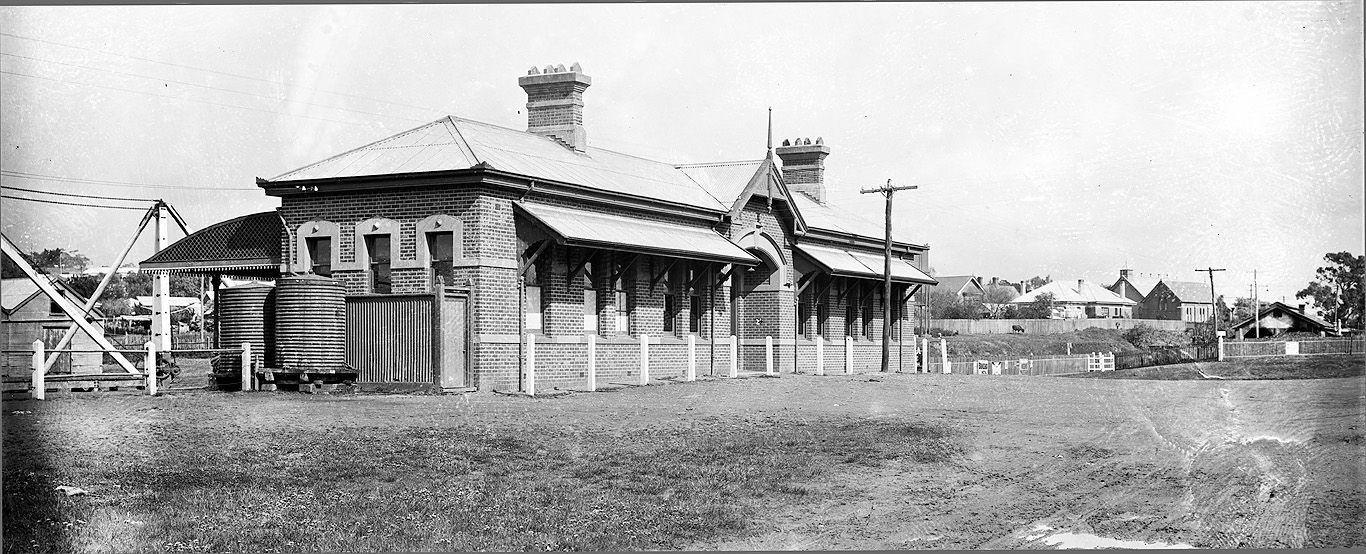
ABOVE: Casterton station building from the North side. Probably not long after opening. BELOW: View inside the parcels office. (PROV collection.)
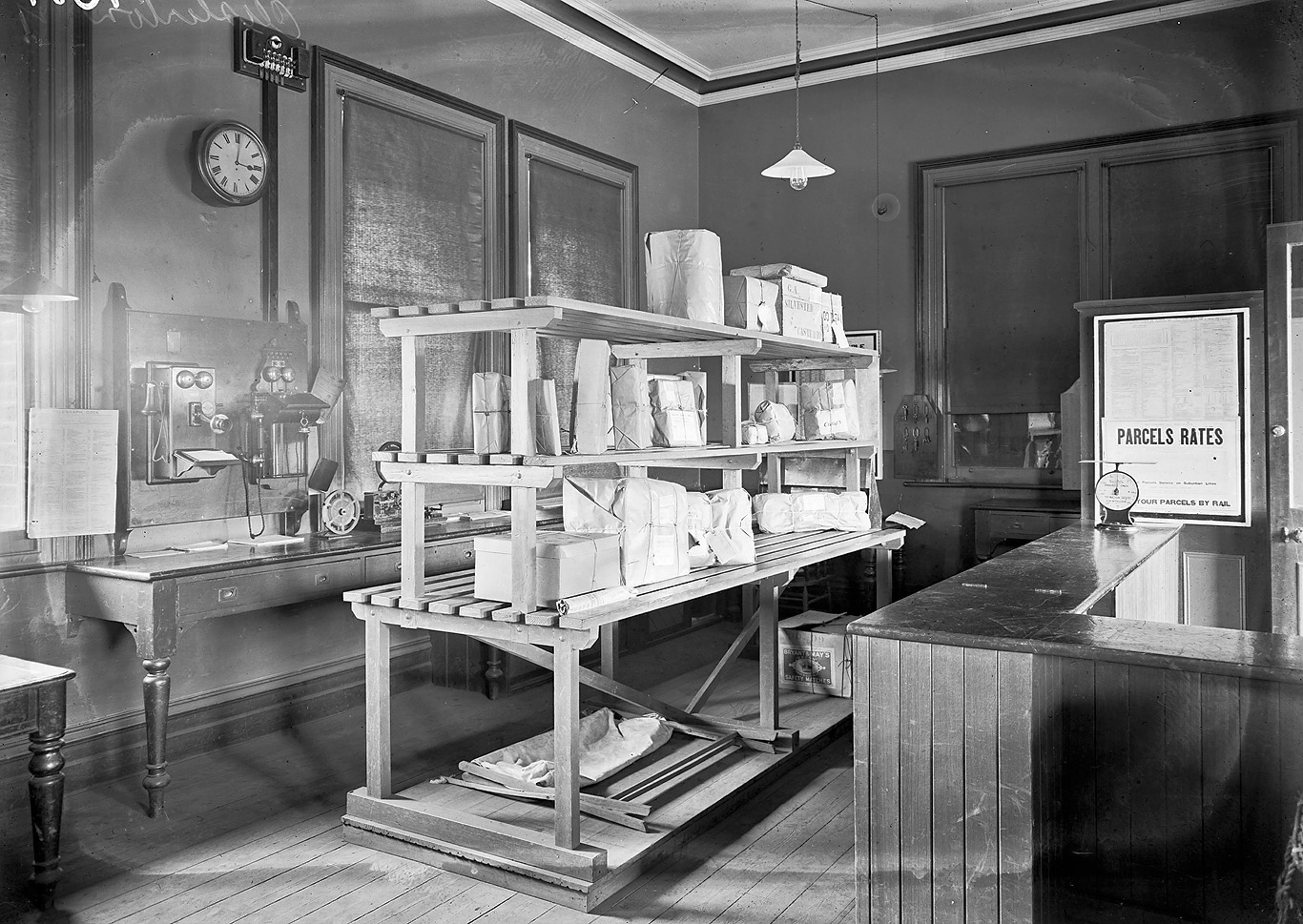
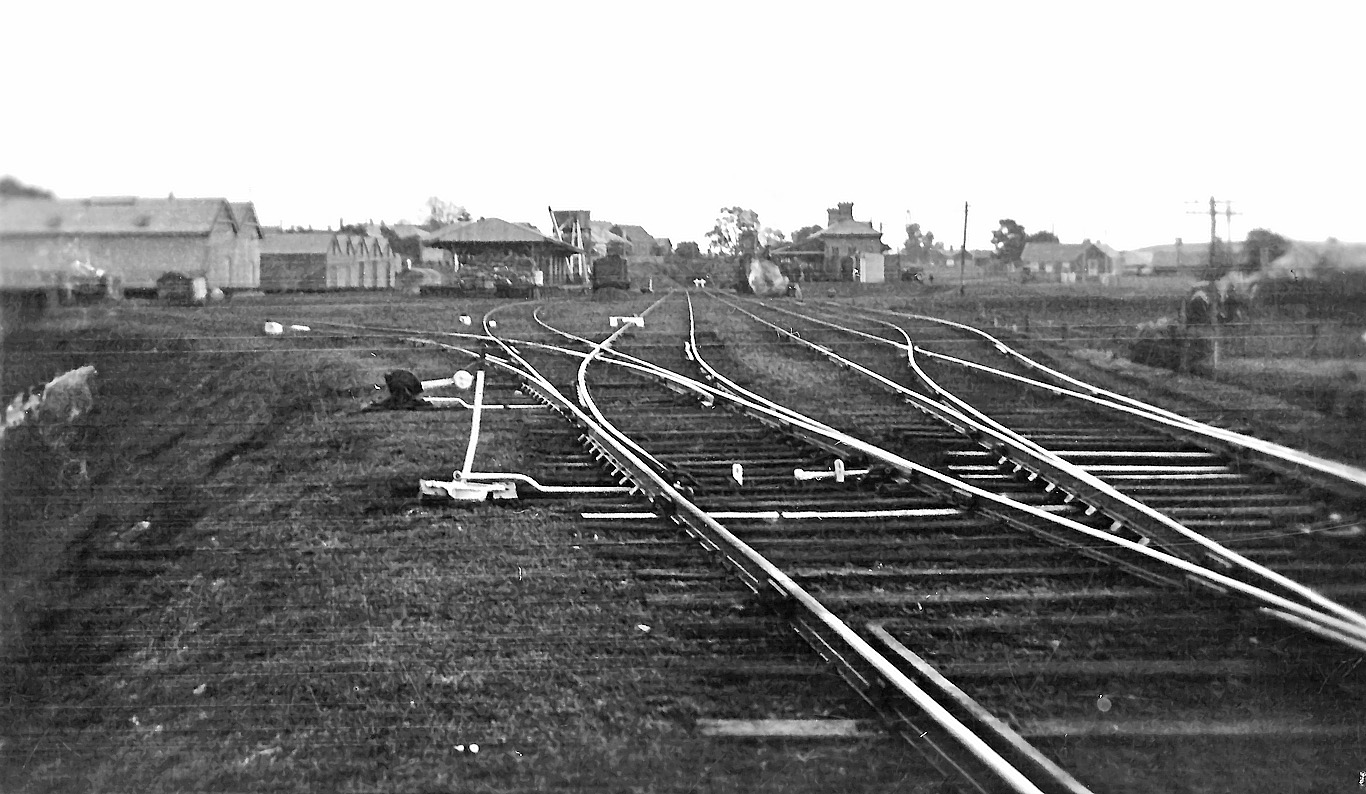
ABOVE: Casteron looking towards the end of line, May 18 1927. The point lever closest to the camera was known as a "column box points", also known as Pot points because the counterweights were on a spindle which worked vertically in the "pot" below the lever. The point lever behind that was known as "Ford's reversible" VR later refined this type of point lever which became known as a Q45 lever.. (photo courtesy Allan Cleverdon)
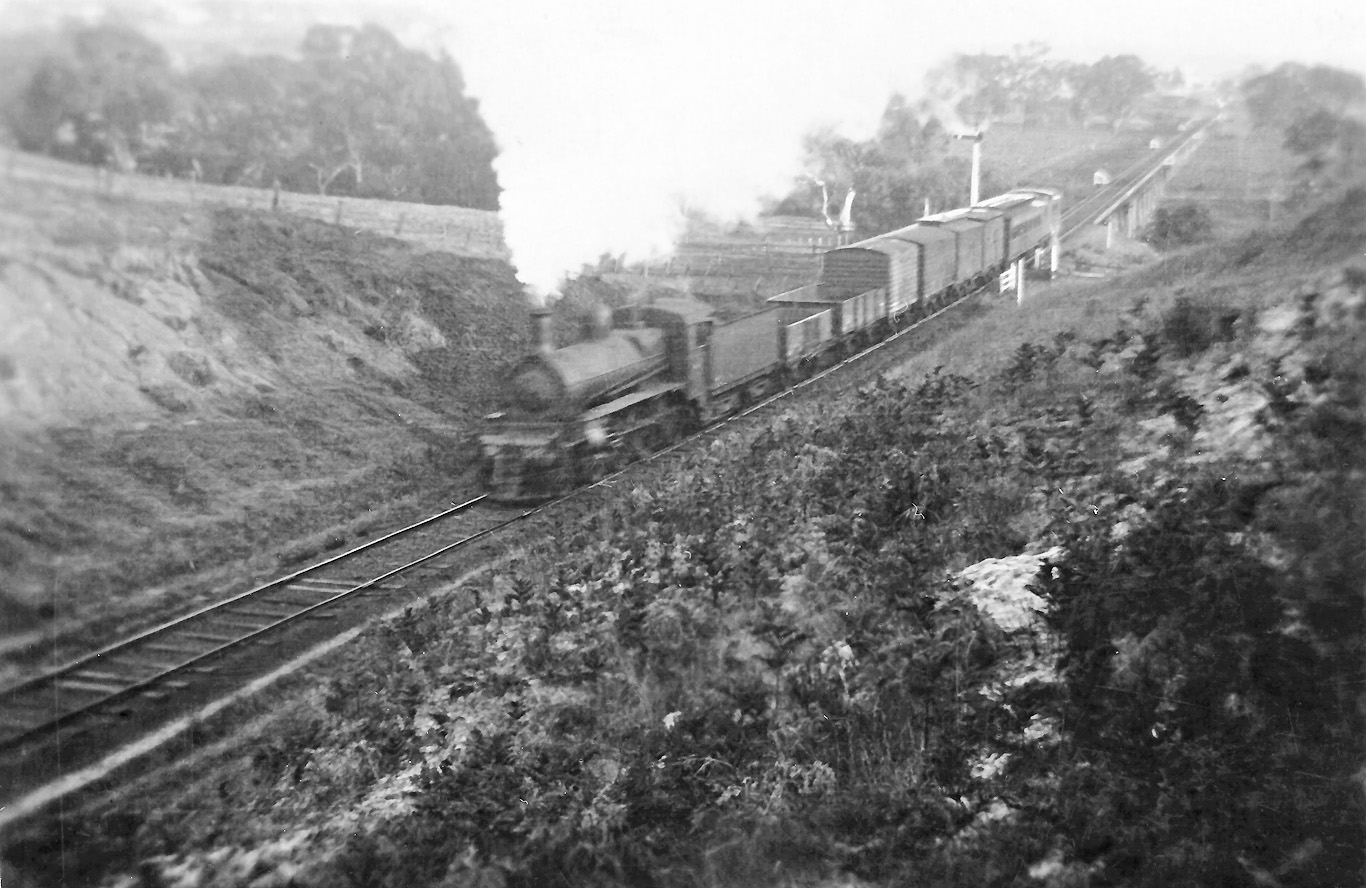
ABOVE: A D2 on an up mixed departs Casterton May 20 1927. (photo courtesy Allan Cleverdon)
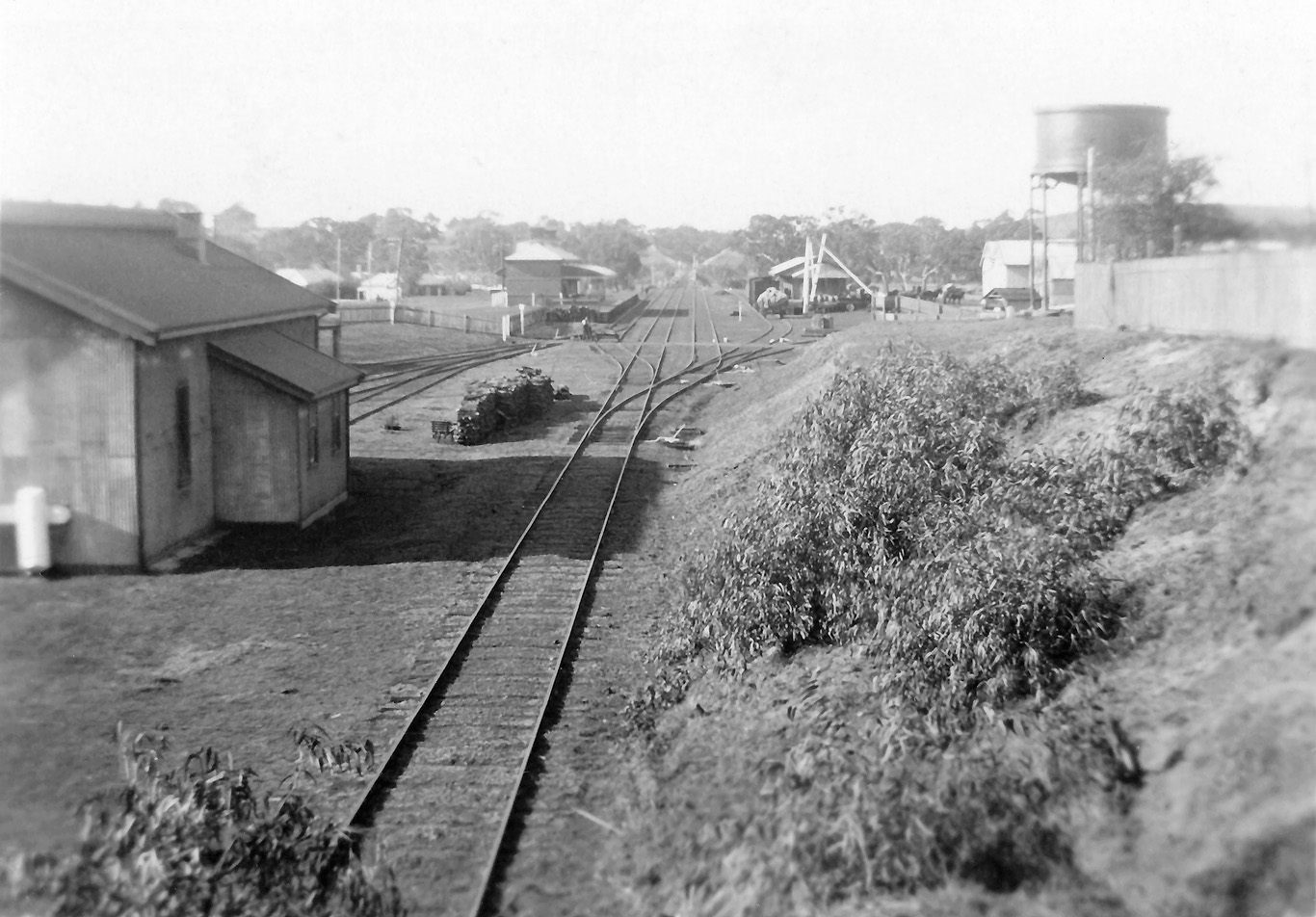
ABOVE: Looking back towards Hamilton, May 18 1927 with the loco shed on the left. (photo courtesy Allan Cleverdon) BELOW: A similar view near the end, Aug 2 1975. (photo courtesy Weston Langford)
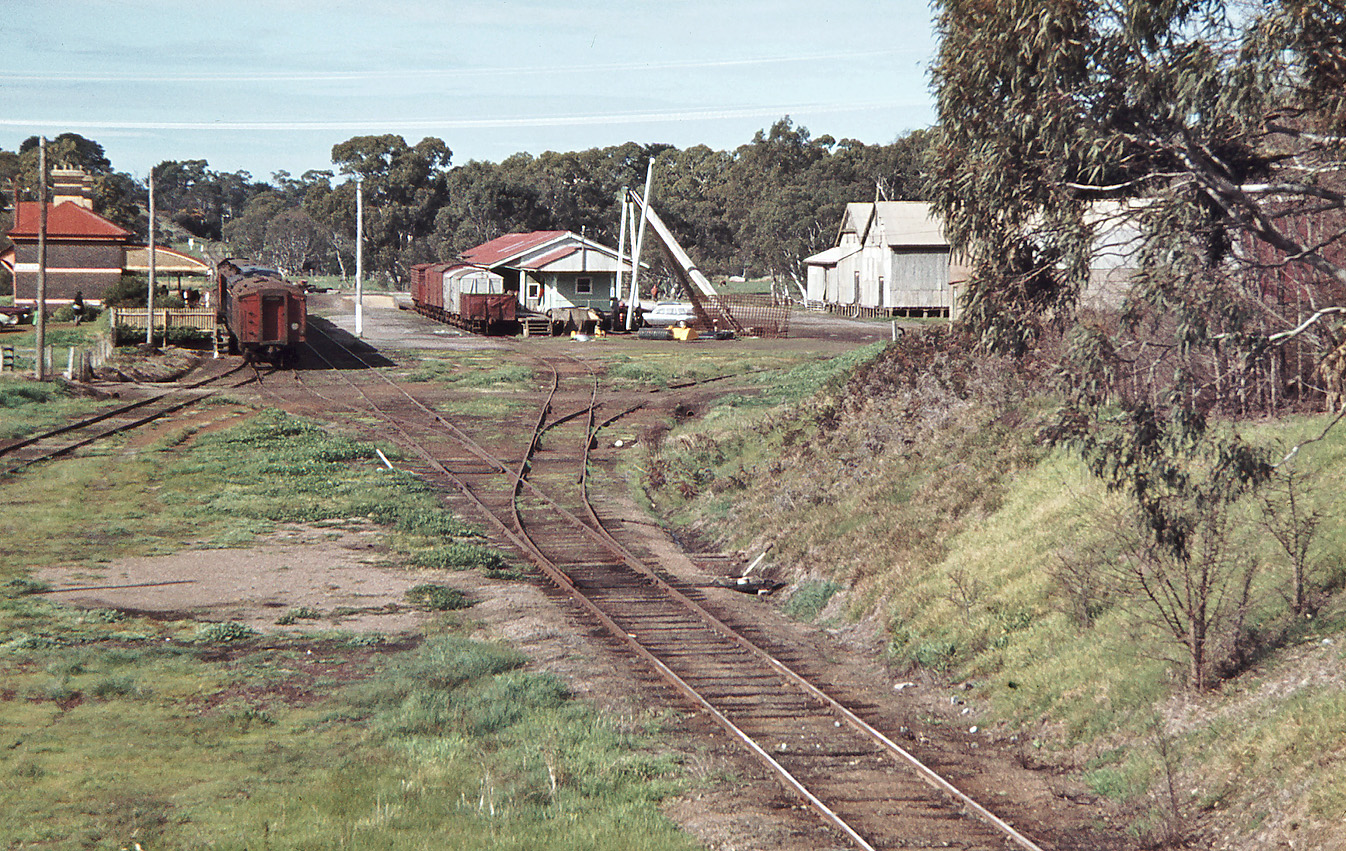
This is the content for Layout P Tag
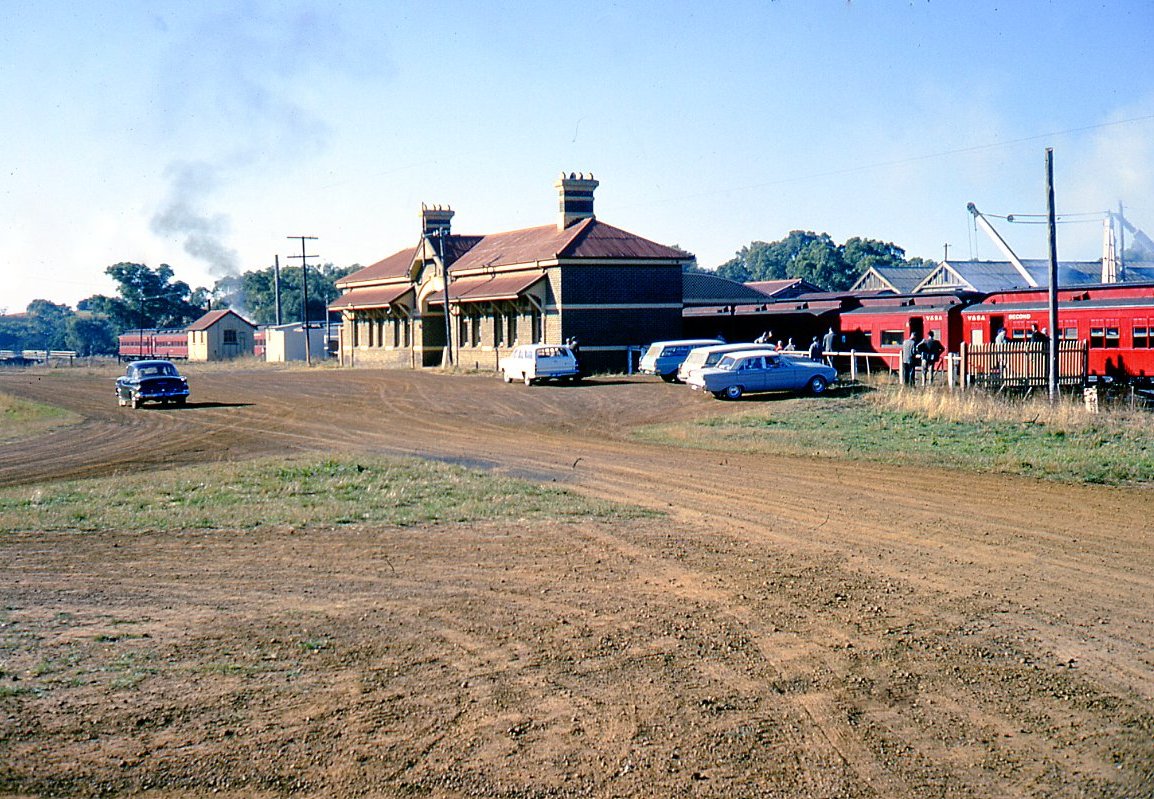
ABOVE: A road side view of Casterton station upon arrival of ‘The South Western Safari’ which ran from 10th to 13th of March 1967. (photo courtesy Neville Gee)
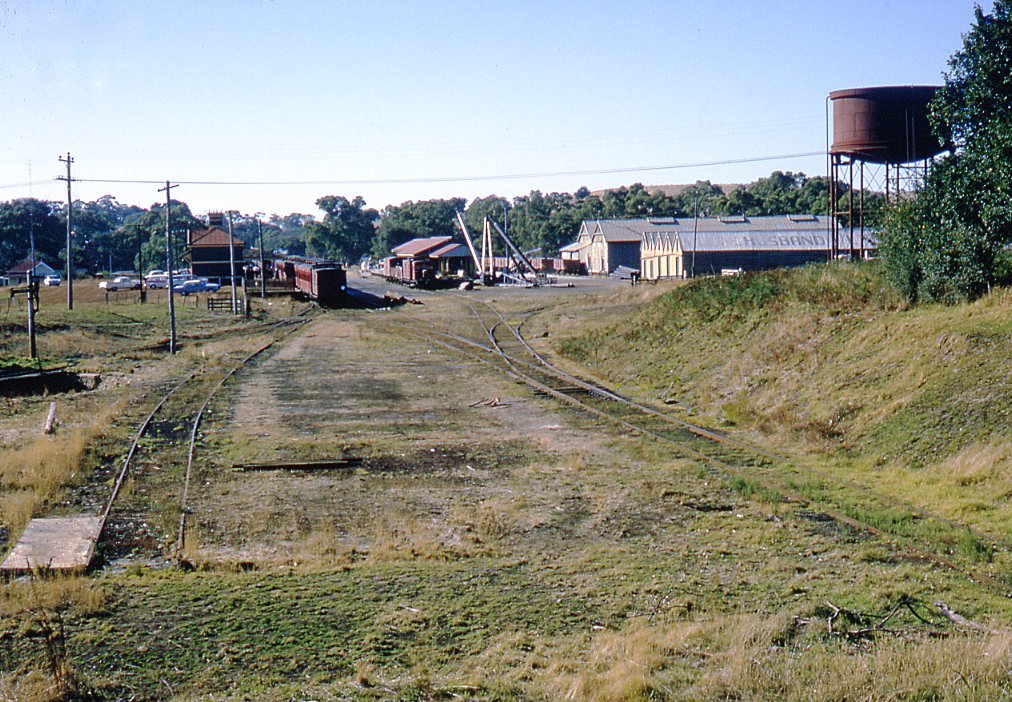
ABOVE: A general view overlooking the site of the former engine shed and turntable with the water crane still in use at time. J 533 and J 544 hauled this train for the journey from Warrnambool to Portland with J 508 taking over at Hamilton for the Balmoral Carpolac section. (photo courtesy Neville Gee)
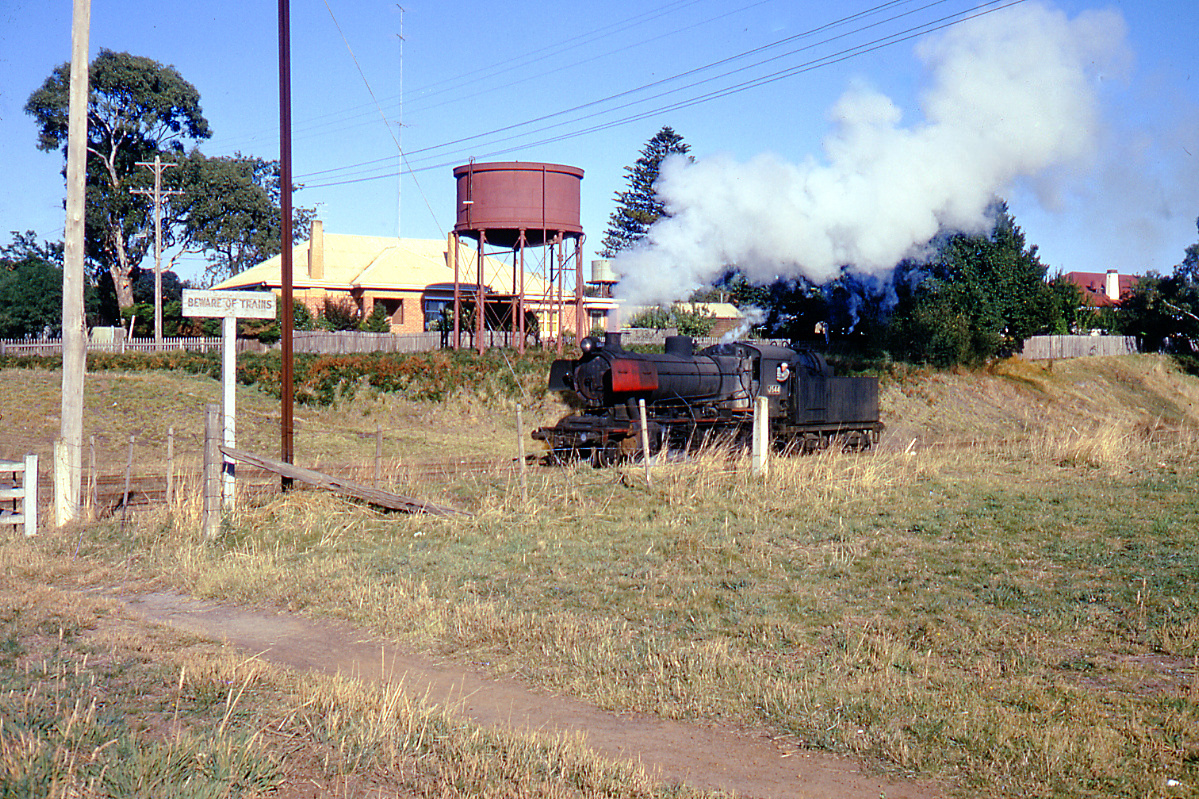
ABOVE: J 544 has been turned and is proceeding towards the up end of the yard to set back onto the train where J 533 will also attach after being serviced. (photo courtesy Neville Gee)
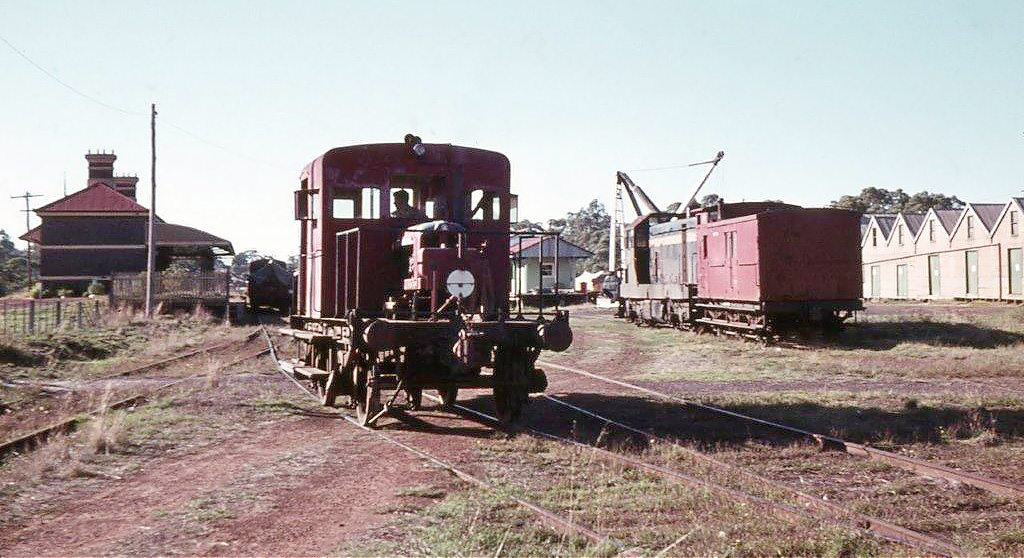
ABOVE: The Casterton Rail Tractor assists with making up an up Casterton to Hamilton goods. March 29 1971. (photo courtesy Doug Miles)
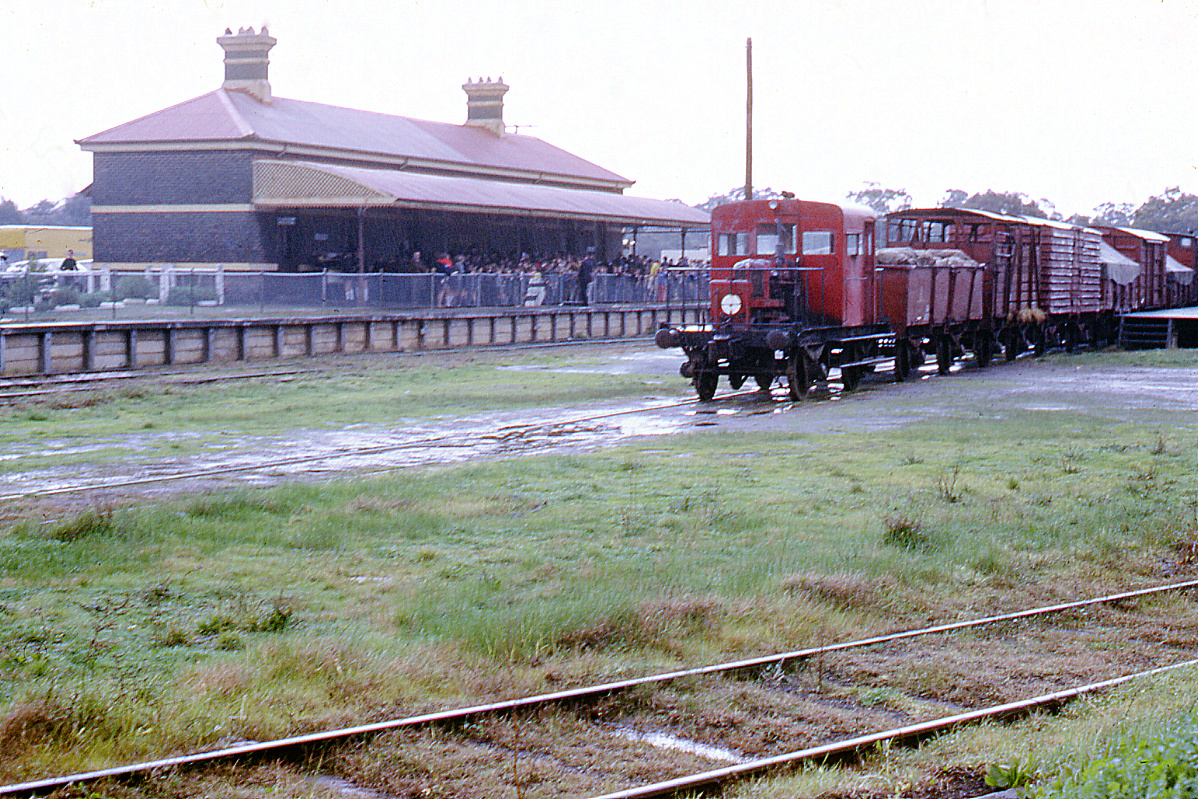
ABOVE: Casterton had sufficient loadings at this time to warrant the use a rail tractor in order to reduce shunting time for the regular goods trains. 4 June 1971. (photo courtesy Neville Gee)
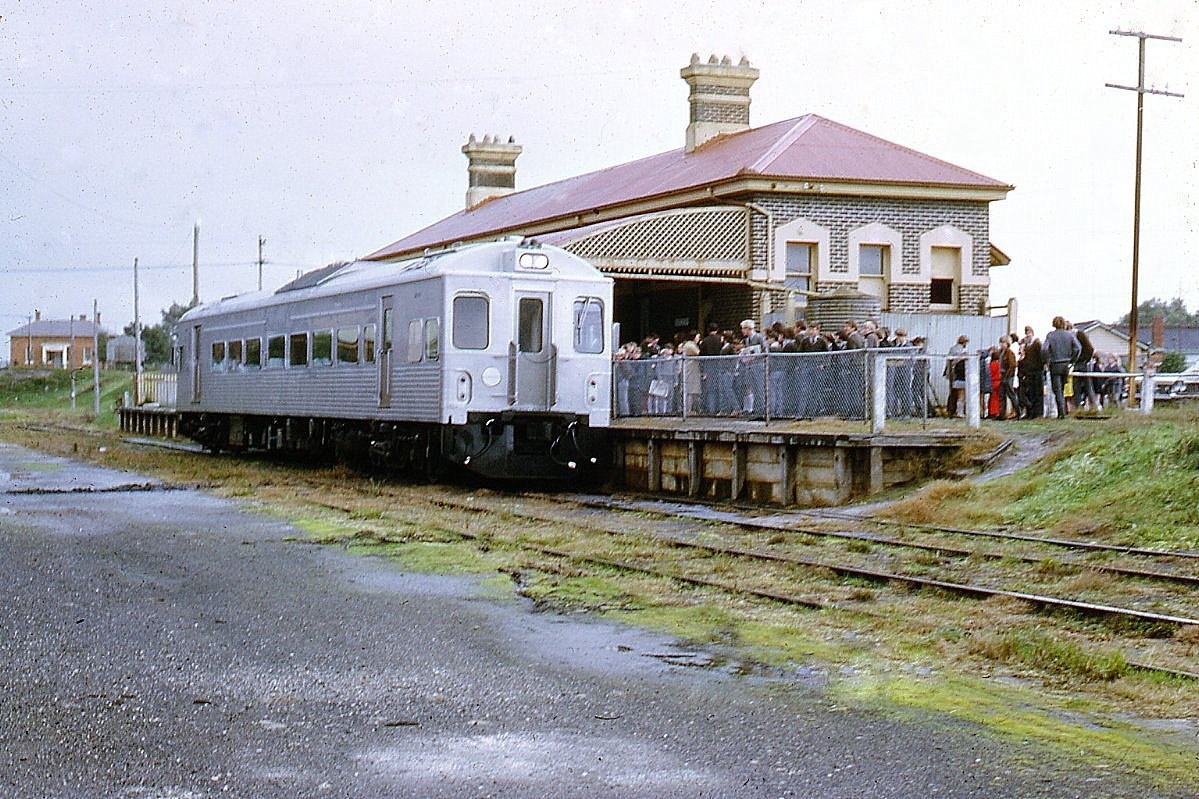
ABOVE: New DRC 40 has arrived at Casterton on its promotional tour prior to entry into regular service on the Ararat to Portland line. There was much preparation and organising involved in the running of this tour. VR Public Relations had information caravans on site and temporary fencing had been erected along the platform, June 4 1971. (photo courtesy Neville Gee)
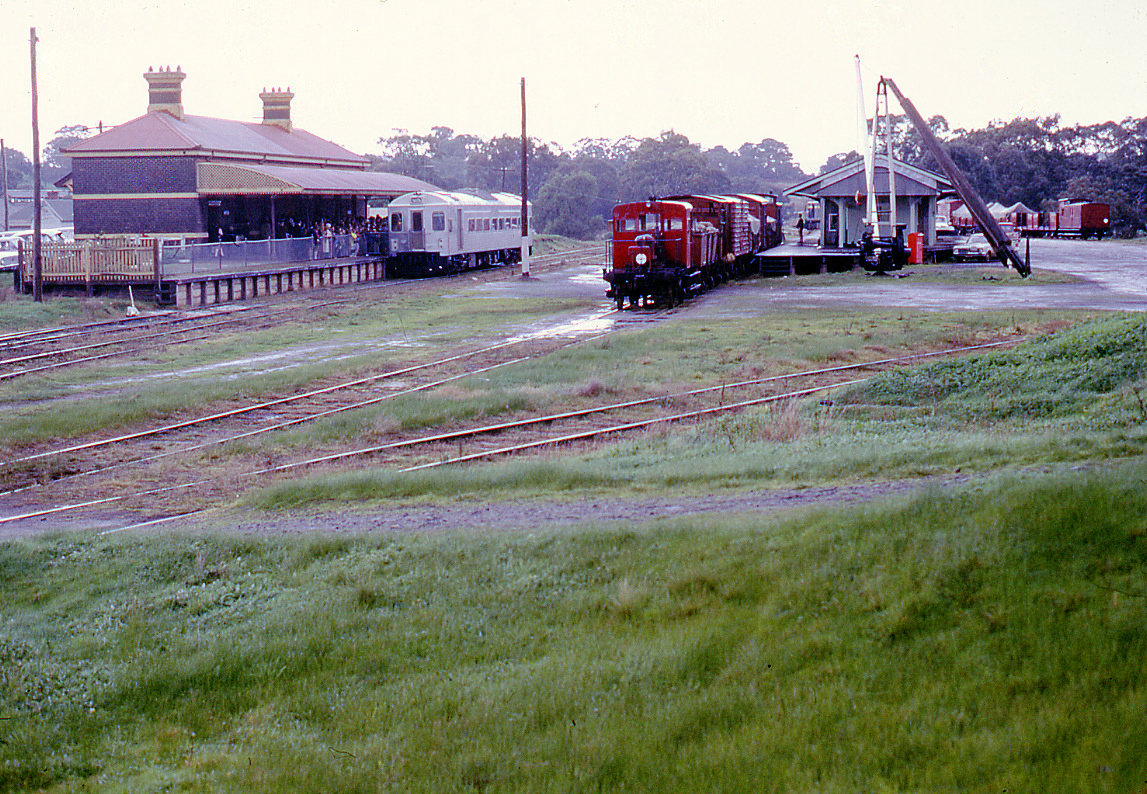
ABOVE: A general view of the station and yard on this dreary winter day where a T Class on the regular goods can be seen waiting to depart from behind the goods shed, June 4 1971. (photo courtesy Neville Gee)
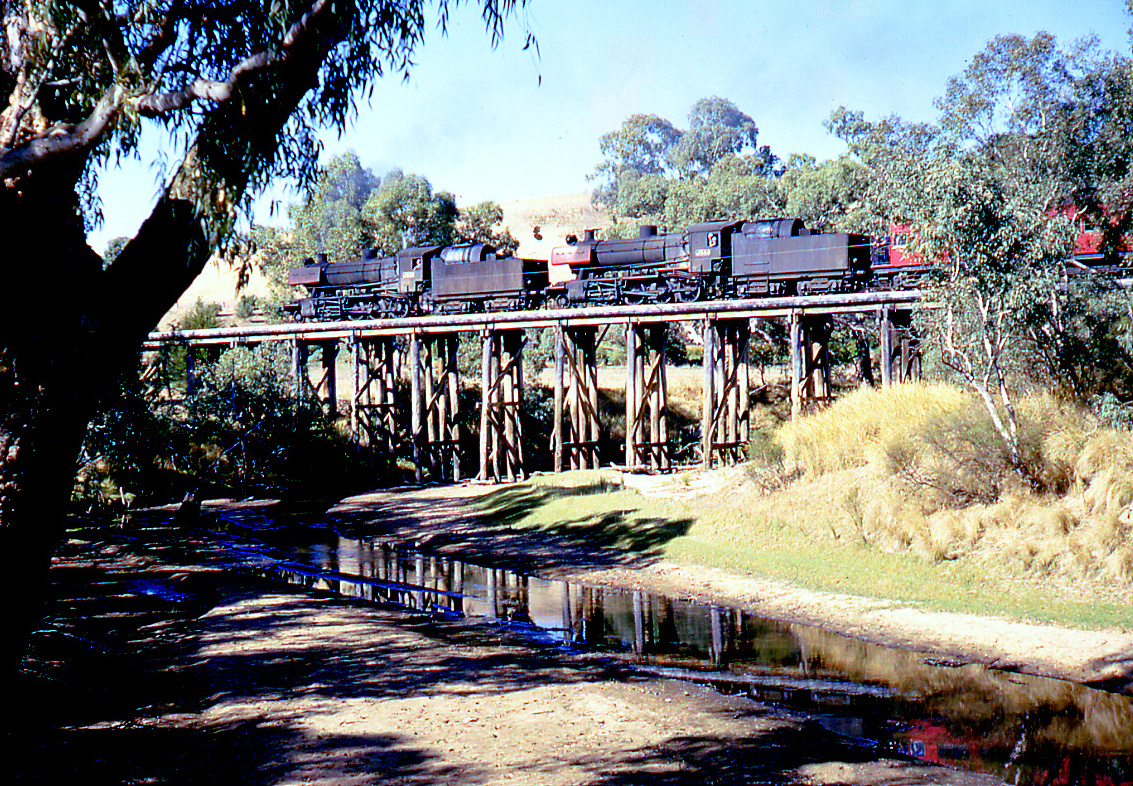
ABOVE: The effect of summer is evident with low water flow in the Glenelg River as J 533 and J 544 depart from Casterton across the impressive trestle bridge. It was unusual for a structure of this size to be built within station limits; however an extension to Nangeela was proposed at one time it would have been required then. (photo courtesy Neville Gee)
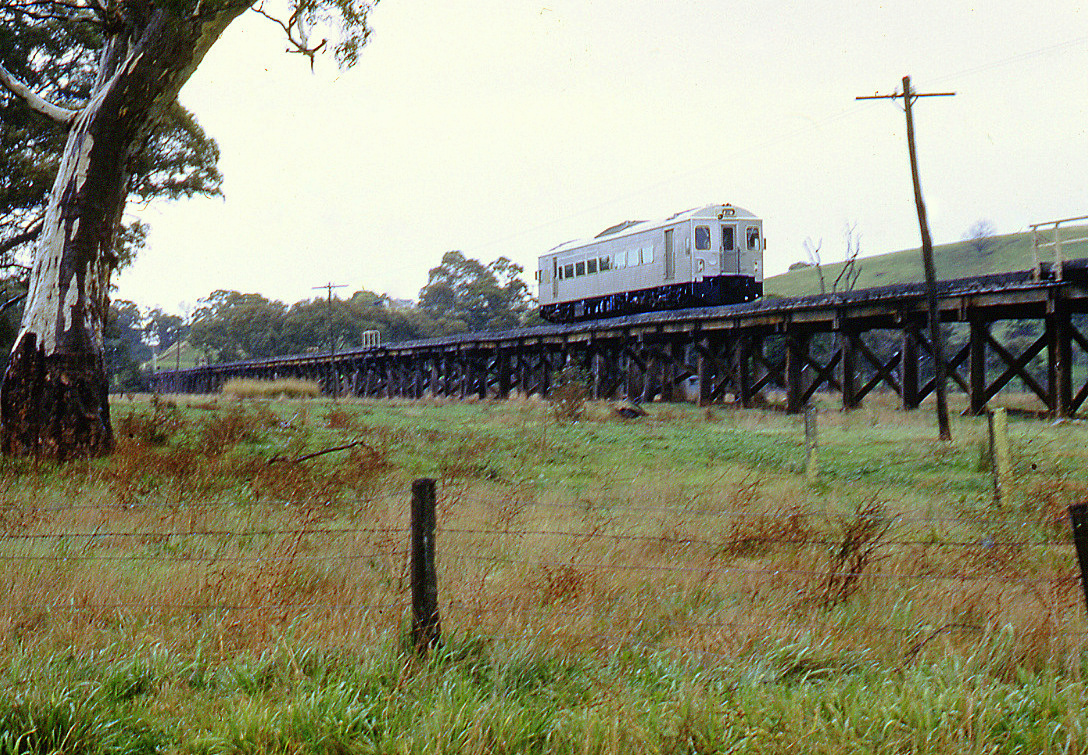
ABOVE: Almost at Casterton DRC 40 is crossing the Glenelg River where the Home Arrival Signal can be seen at the far end of the bridge, June 4 1971. (photo courtesy Neville Gee)
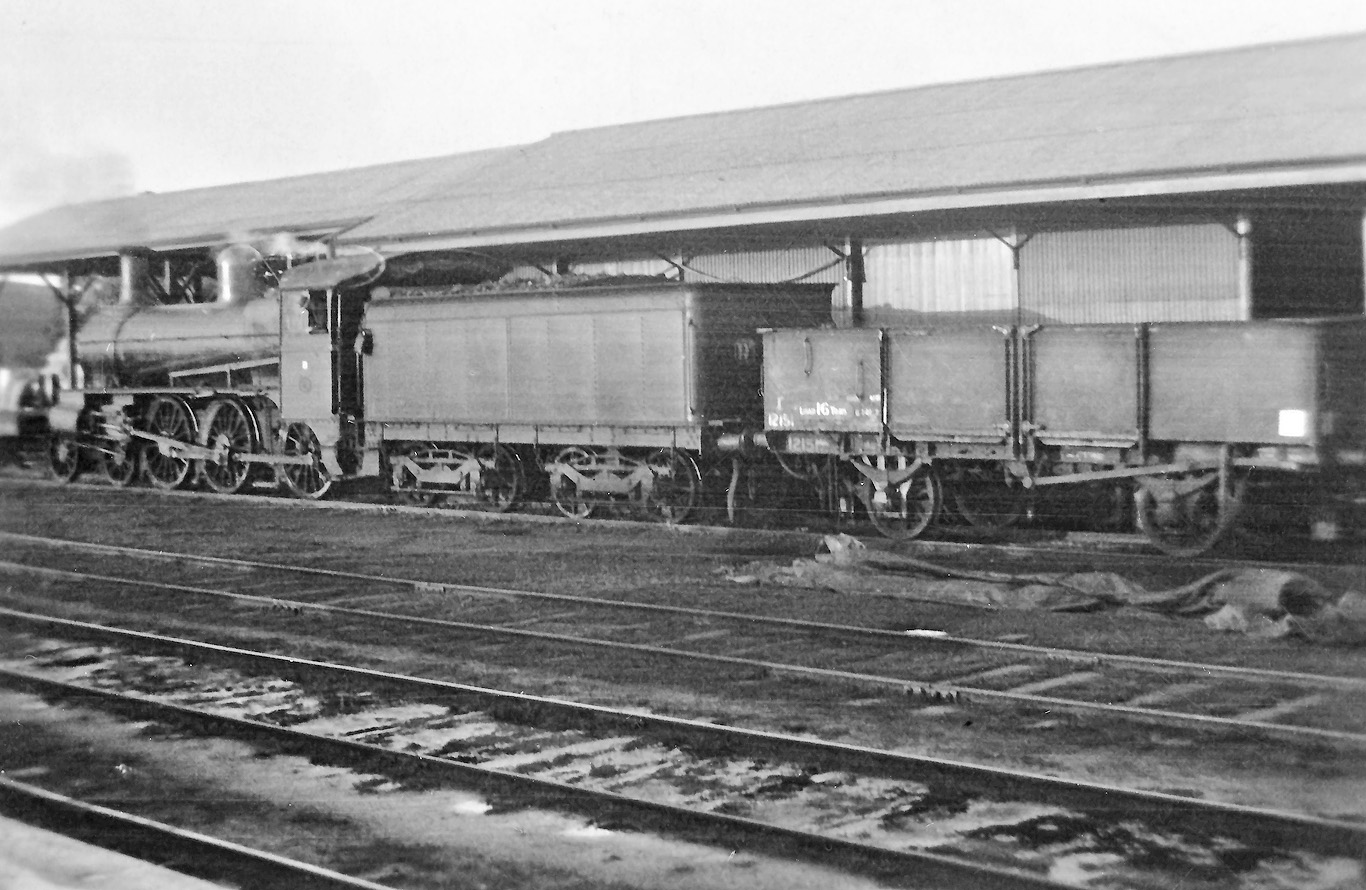
ABOVE: A D2 shunts in the goods shed road at Casterton May 25 1927. (photo courtesy Allan Cleverdon)
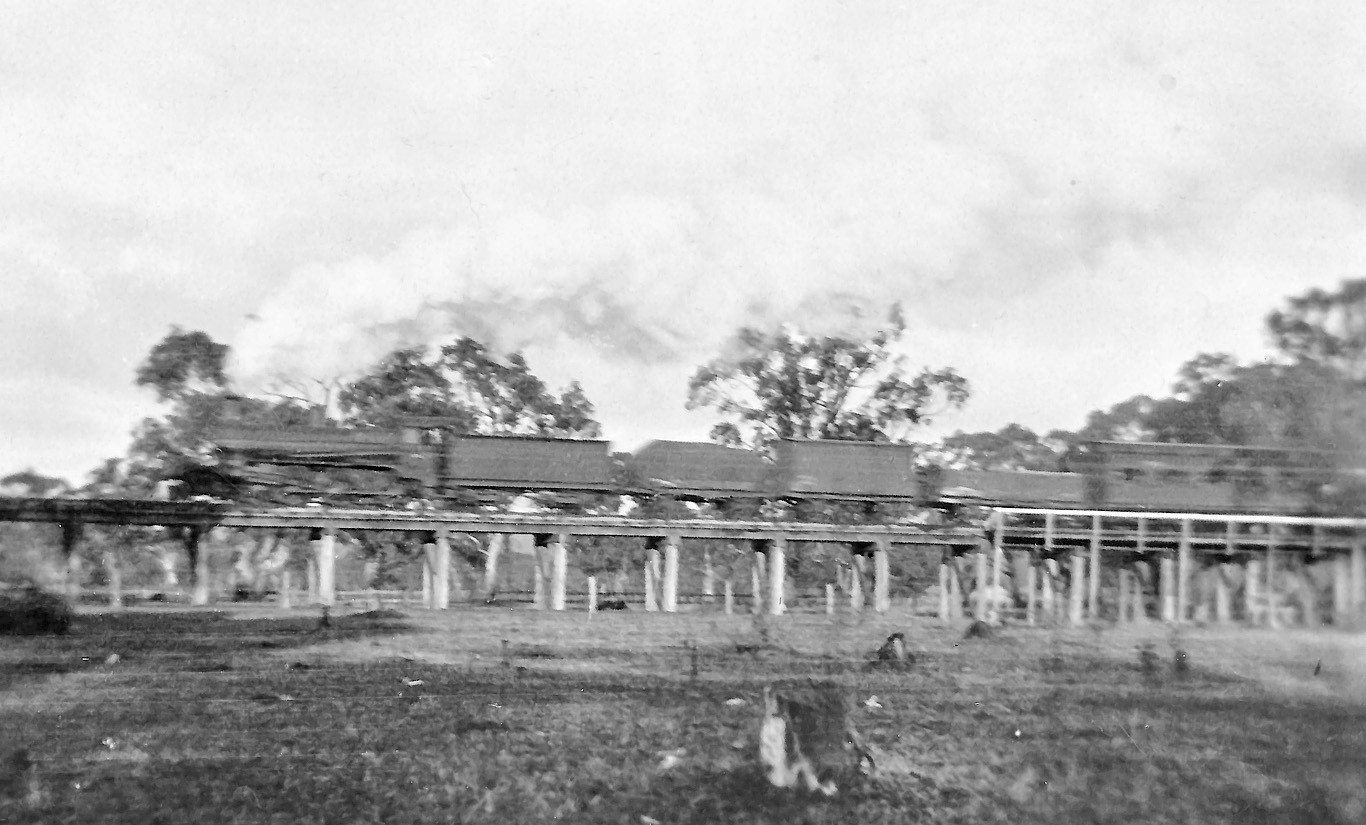
ABOVE: A D2 on an up mixed crosses the Glenelg River bridge as it departs Casterton May 18 1927. (photo courtesy Allan Cleverdon)
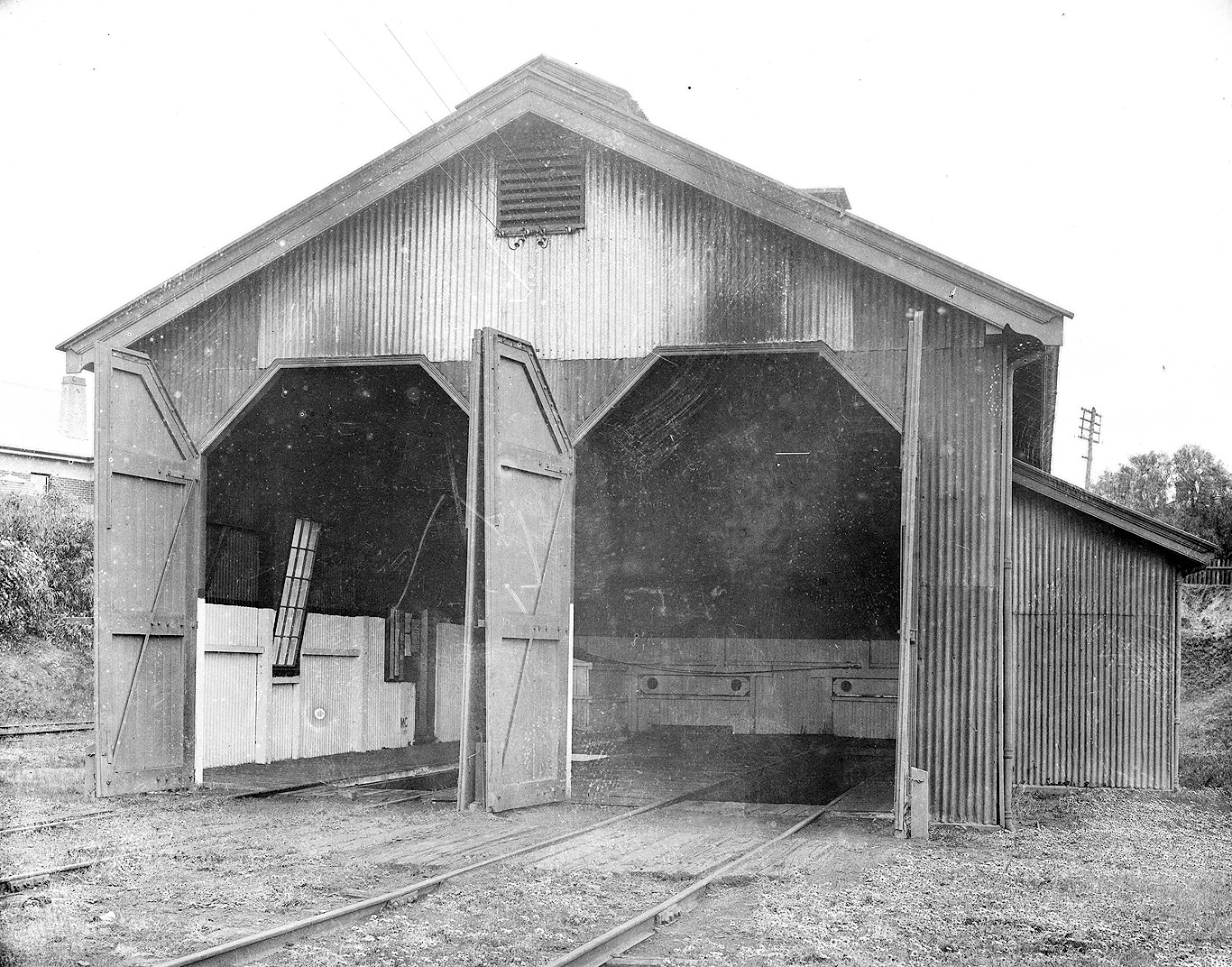
ABOVE: Casterton loco depot, date unknown. (SLV collection)
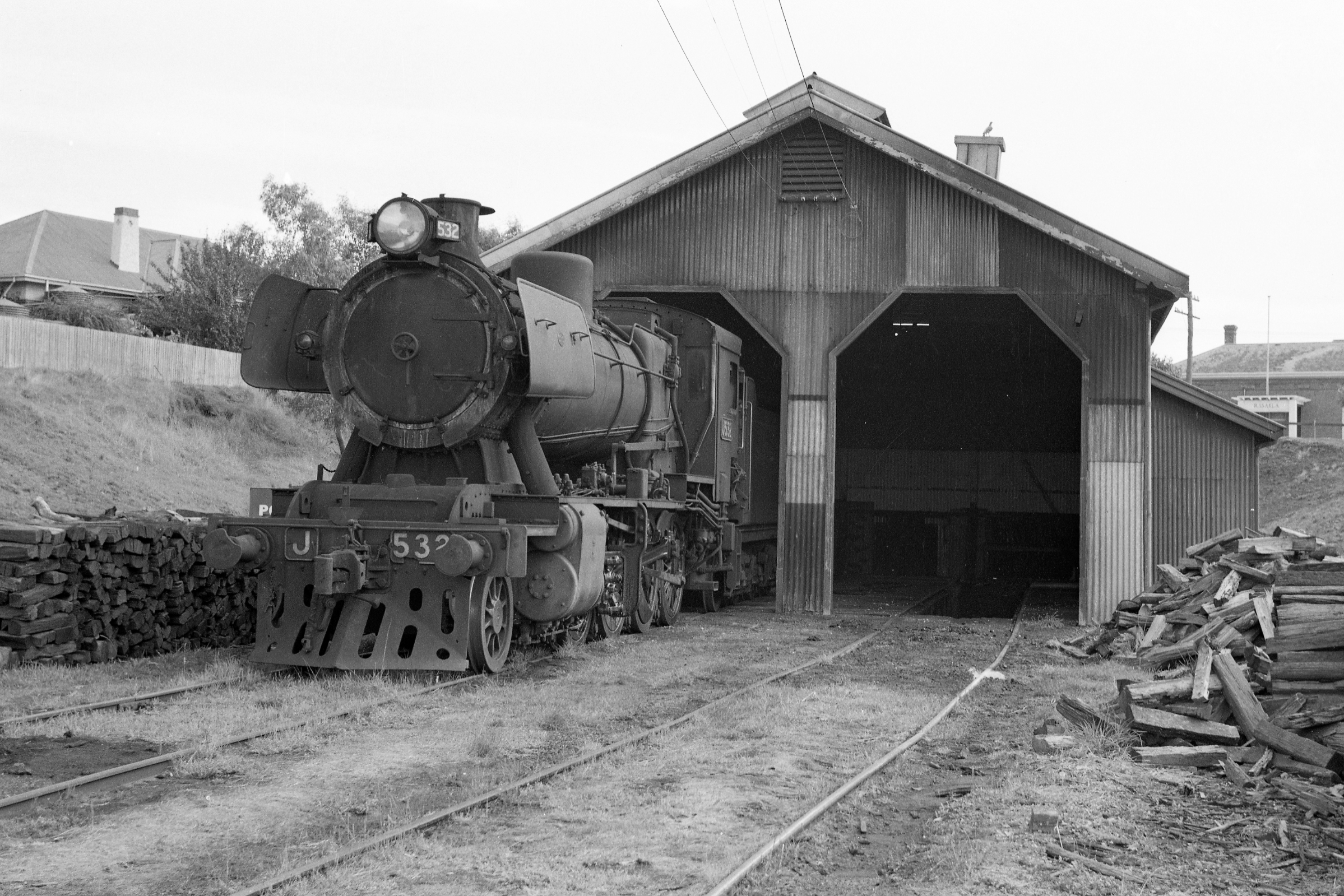
ABOVE: Casterton loco shed, March 29 1959. This shed was built by J Paterson and completed Sep 10 1884. (photo courtesy Des Jowett)
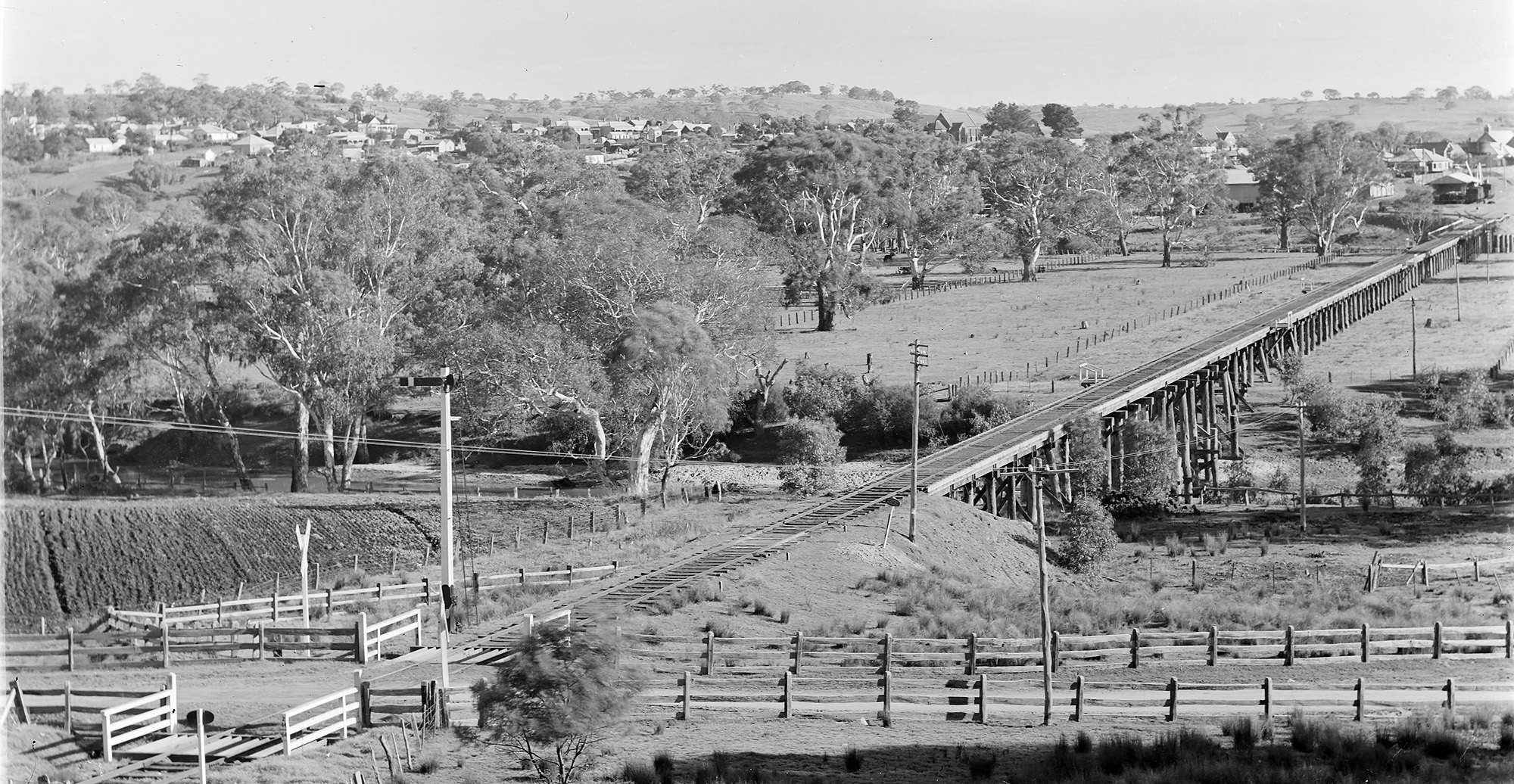
ABOVE: As soon as trains left Casterton they were on the long bridge over the Glenelg river and then faced a short 1 in 50 climb that started at the level crossing.
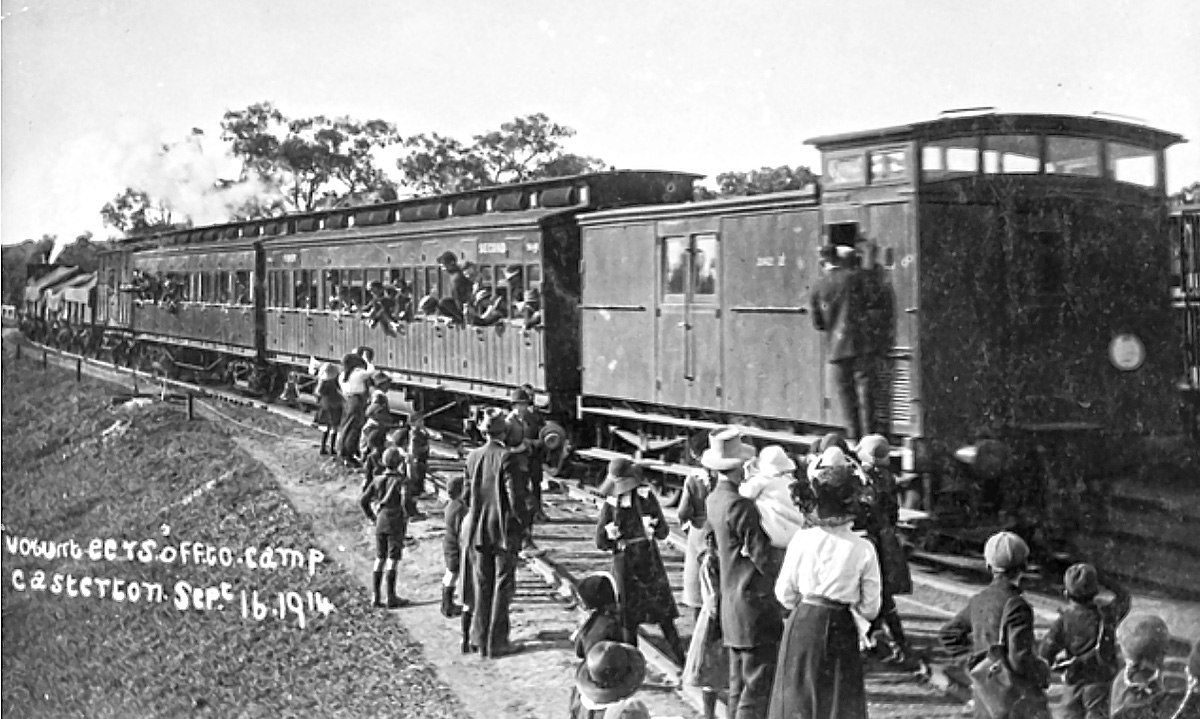
ABOVE: A mixed train departs Casterton Sep 16 1914. (photo courtesy Australian War Memorial)
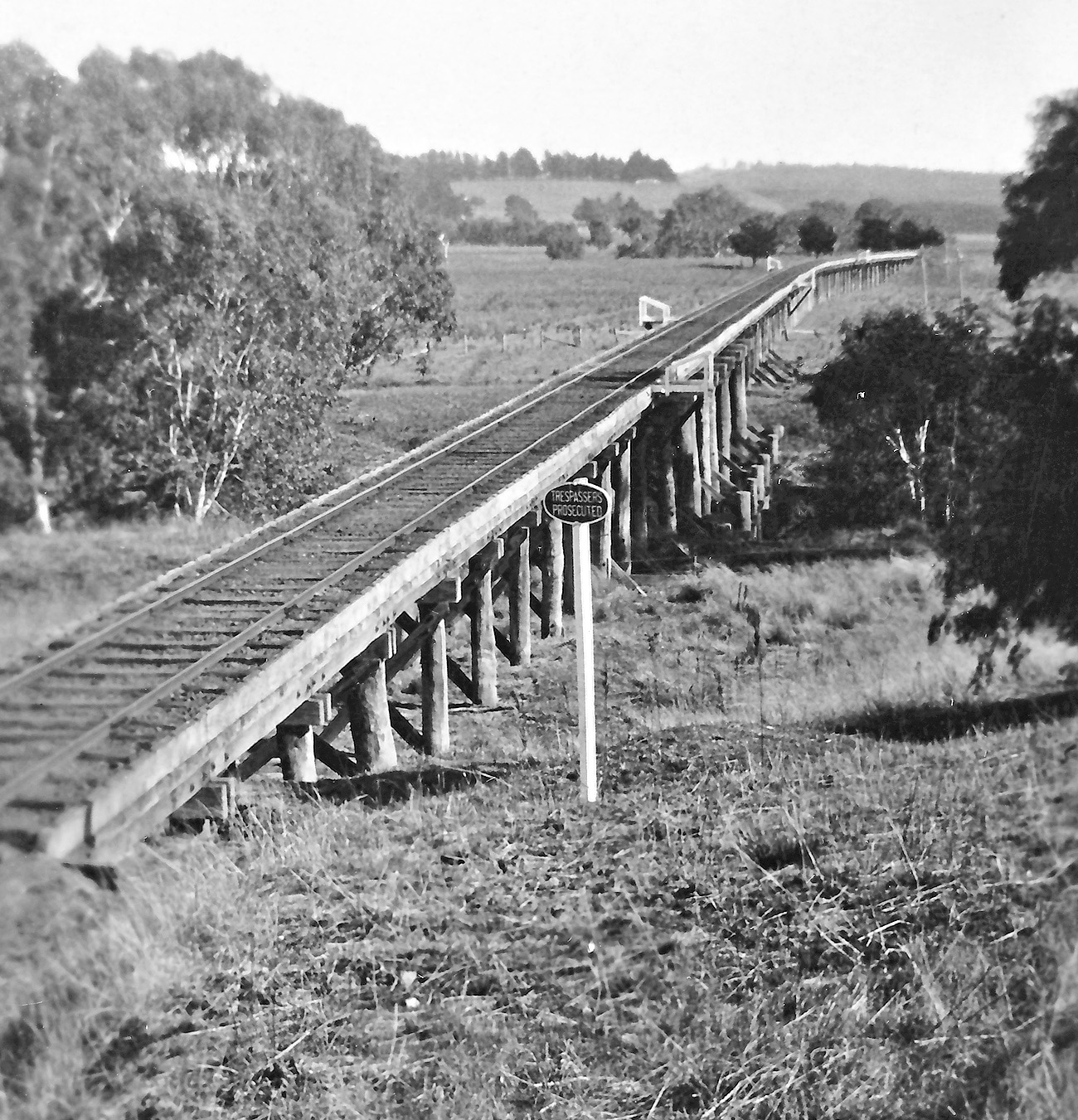
ABOVE: About a mile after crossing the Glenelg River the line crossed the Wannon River on an equally impressive bridge. This view is looking back towards Casterton, May 14 1927. BELOW: A closeup of the bridge (photos courtesy Allan Cleverdon)
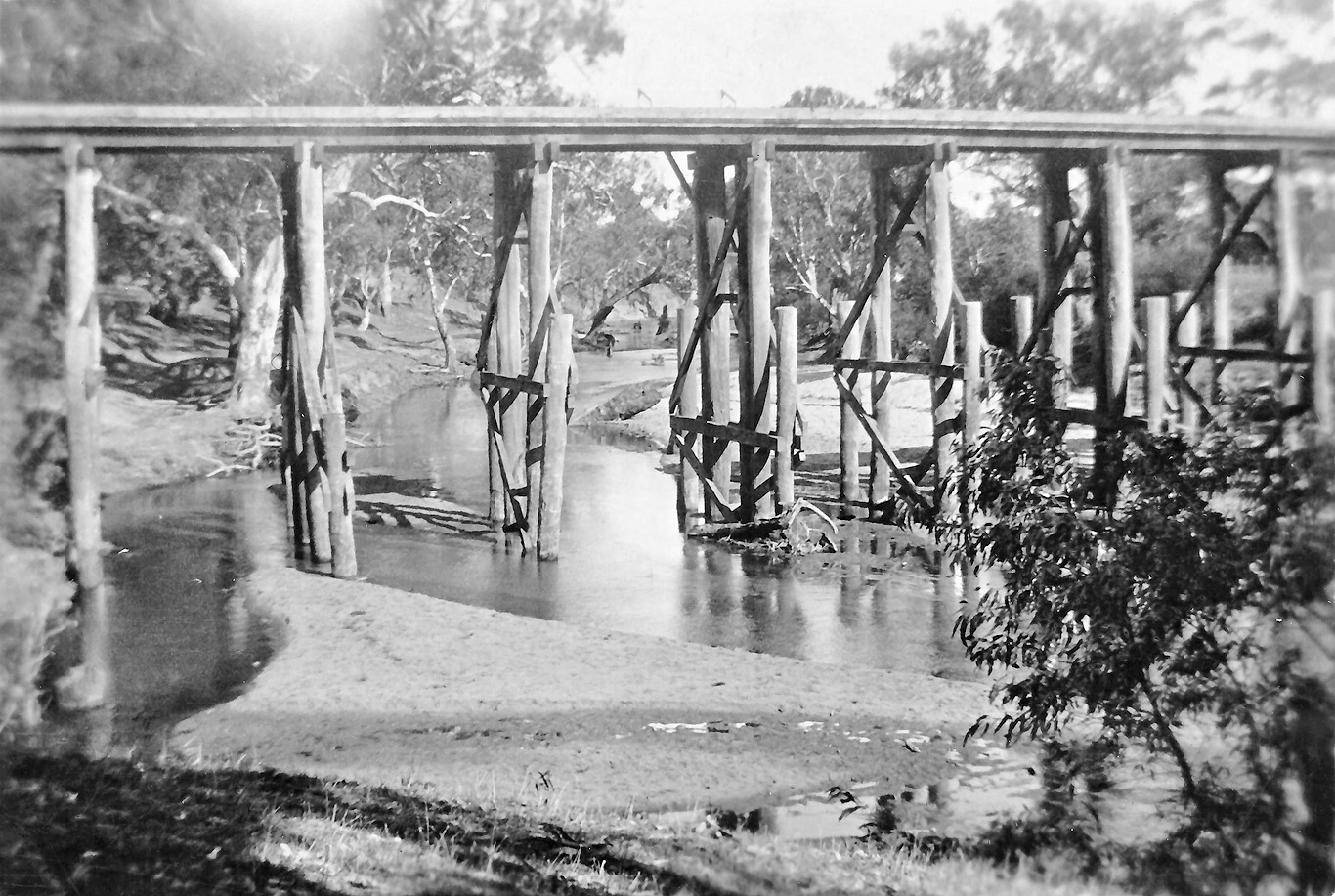
SANDFORD
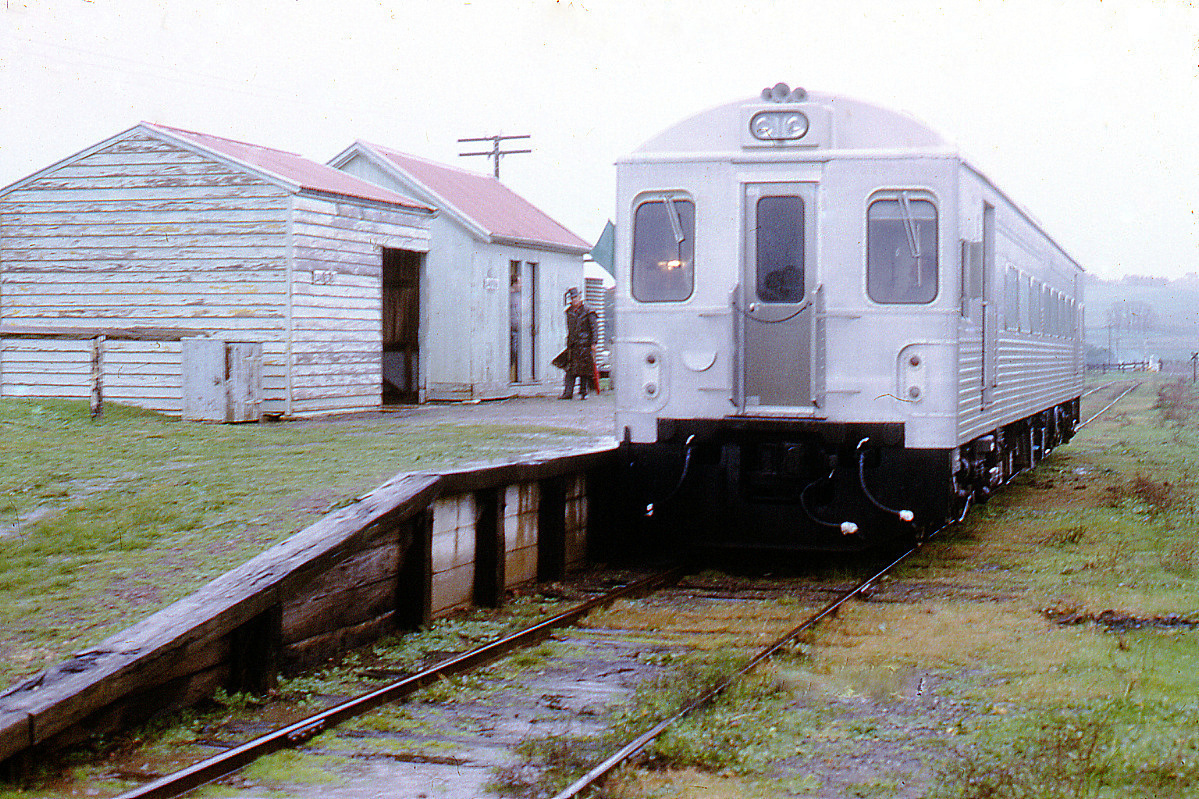
ABOVE: With the guard waving a green flag DRC 40 departs Sandford station heading back towards Branxholme. The large station building from here was relocated to Goroke in 1955 after which a small portable office was provided for the small amount of traffic, June 4 1971. (photo courtesy Neville Gee)
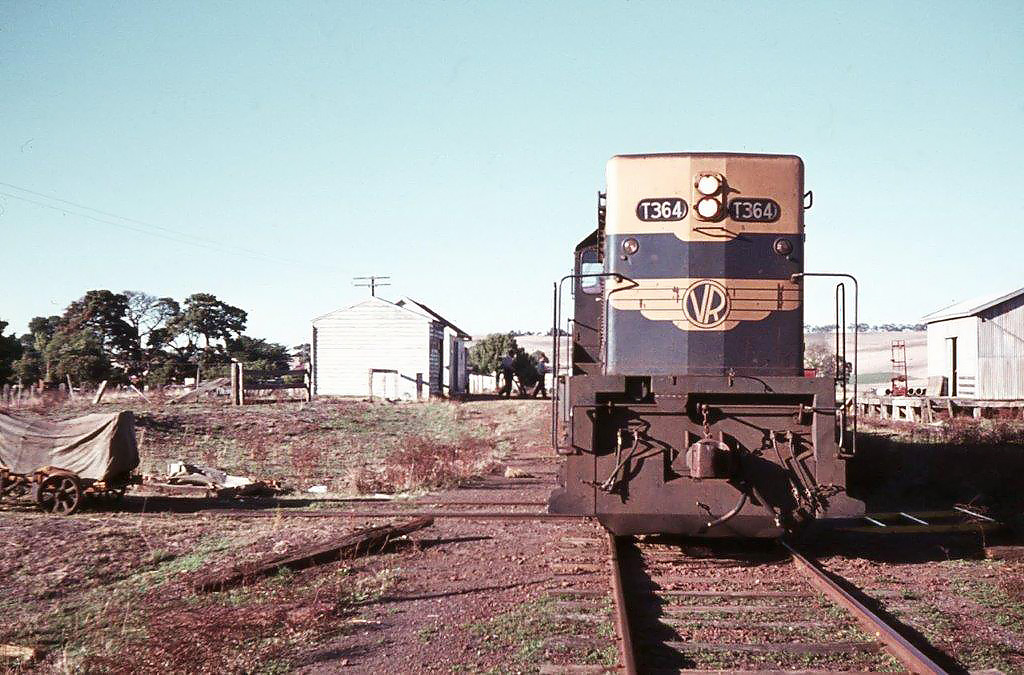
ABOVE: A down goods at Sandford , March 29 1971. (photo courtesy Doug Miles)

ABOVE: This view of Sandford, is looking towards Hamilton and was taken a few months after the lines closure. Jan 1 1978. (photo courtesy Geoff Winkler)
HENTY
1962 Henty signal arrangement diagram
1967 Henty signal arrangement diagram
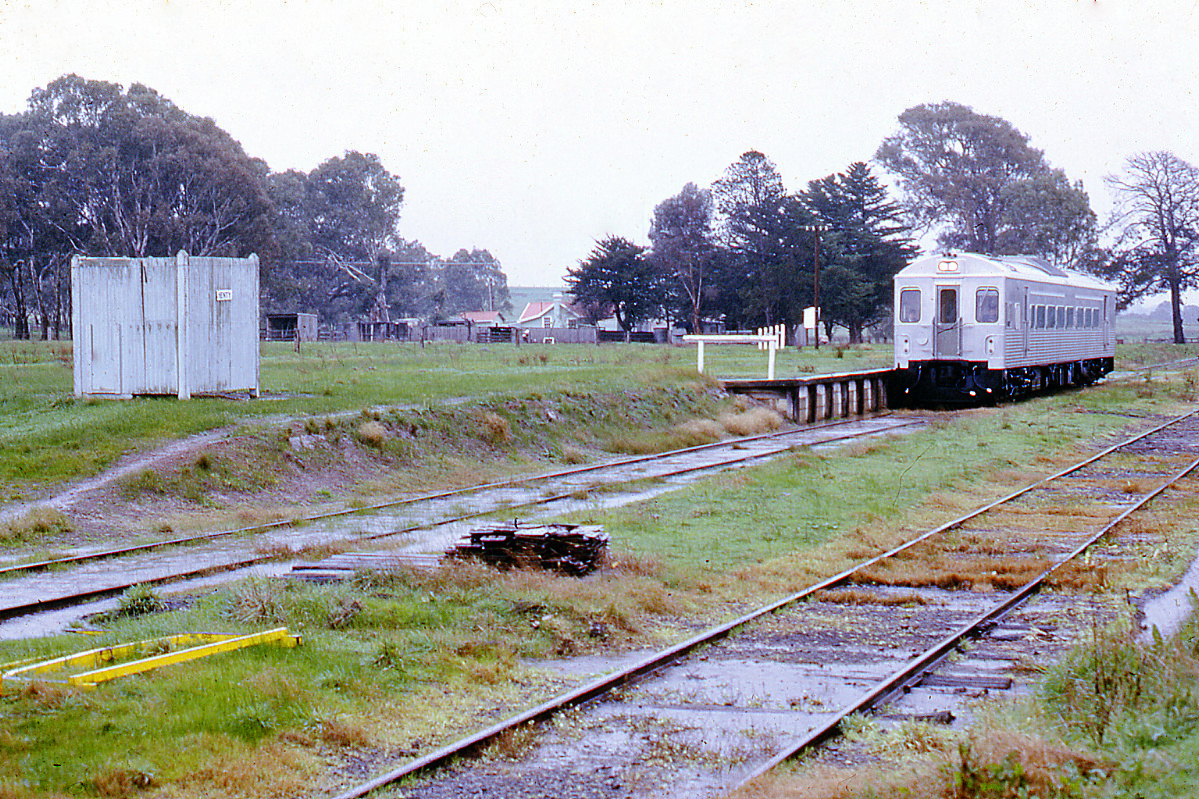
ABOVE: As it coasts along the waterlogged track DRC 40 passes through Henty station, where the only remains are a small shed along with the namboard on a cut back section of passenger platform, June 4 1971. (photo courtesy Neville Gee)
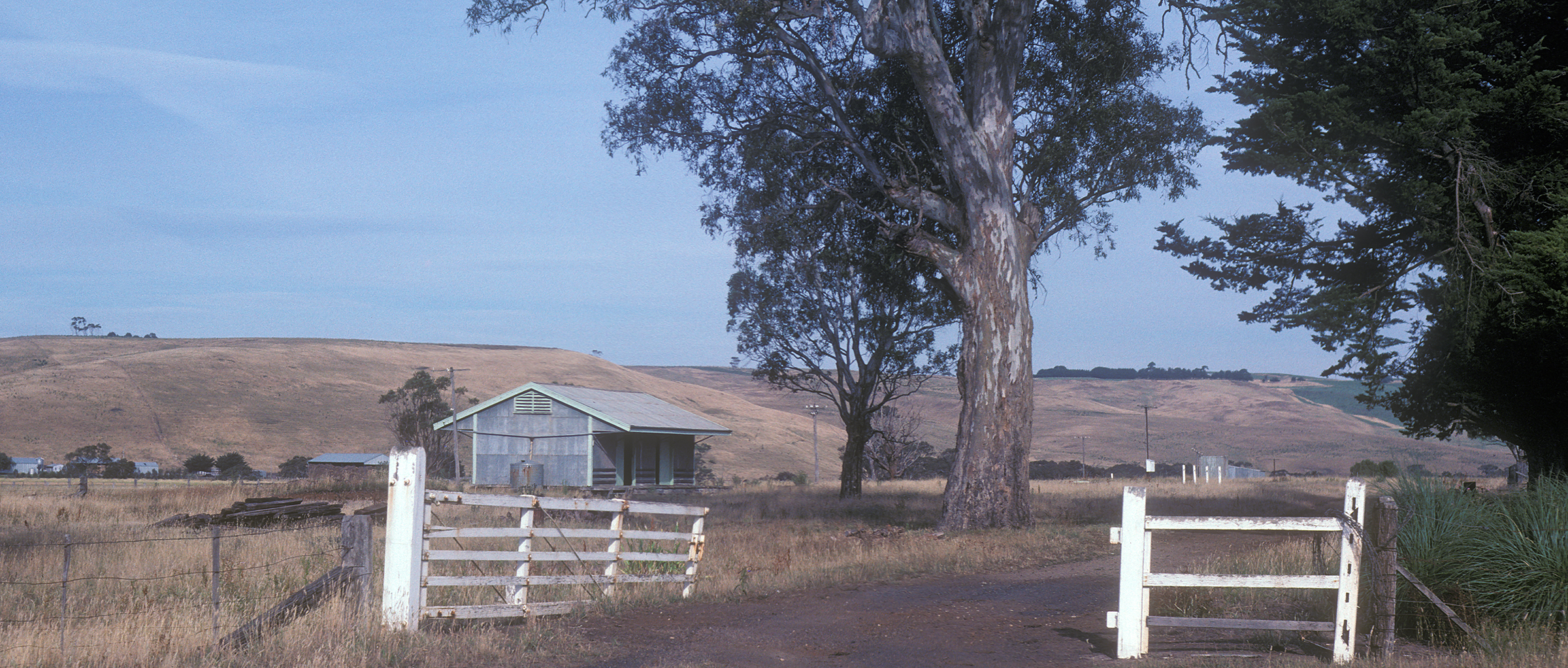
ABOVE: The road entrance into the goods yard at Henty, Jan 1 1978. (photo courtesy Geoff Winkler)
MERINO
1947 Merino signal arrangement
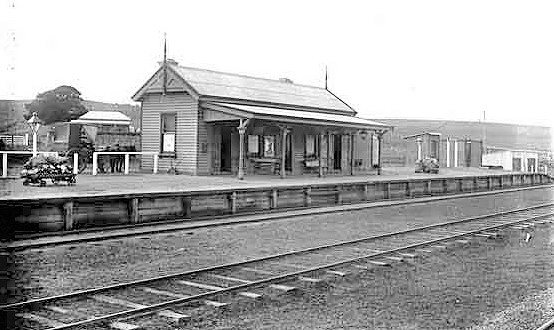
ABOVE: Very early view of Merino station building. (PROV collection)
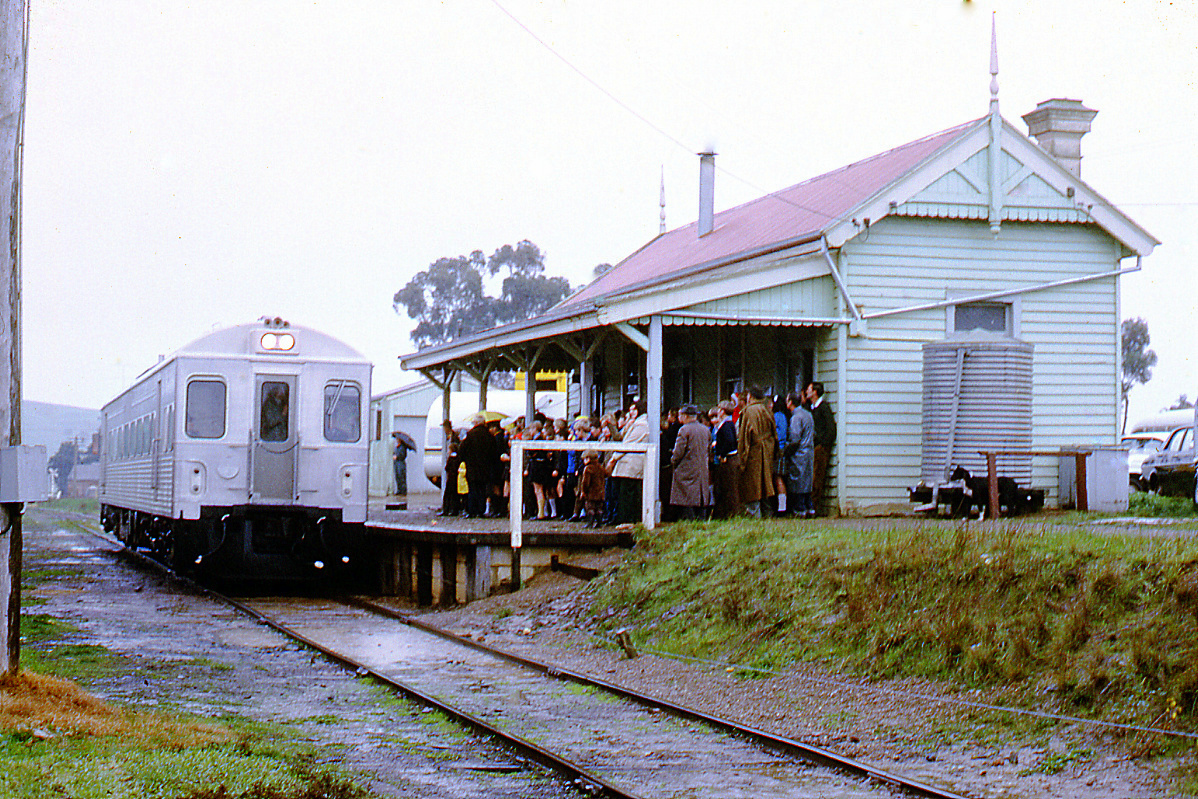
ABOVE: Many locals have turned out in the rain at Merino to see what the new railmotor is like, while VR publicity caravans are set up at the down end of the station building. This is the same style of station building that was formerly at Sandford, June 4 1971. (photo courtesy Neville Gee)
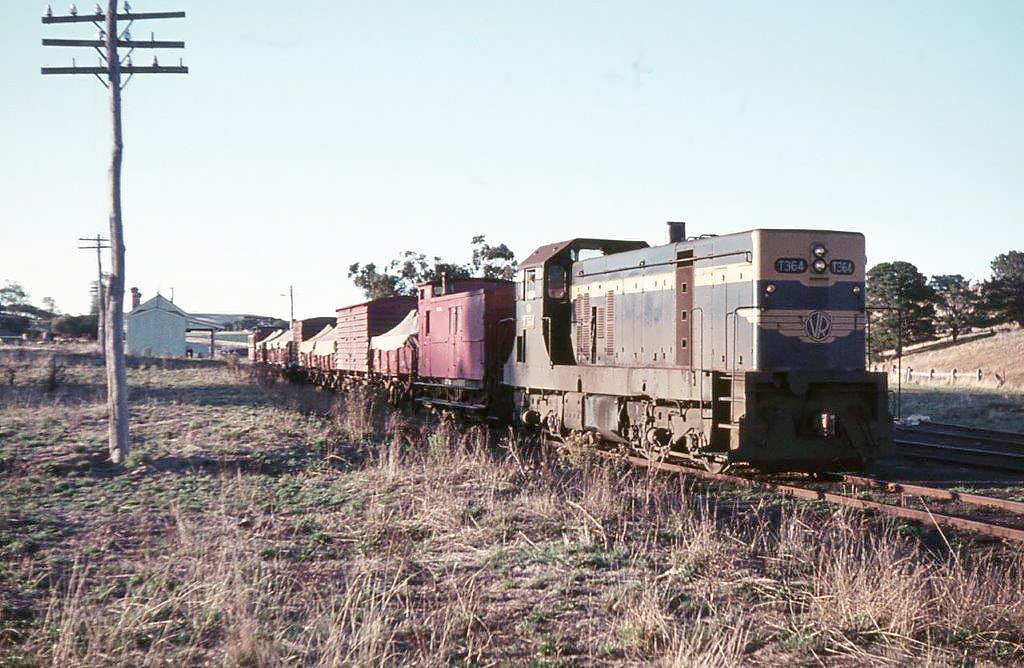
ABOVE: A down goods departs Merino for Casterton, March 29 1971, (photo courtesy Doug Miles)

ABOVE: Merino, looking towards Hamilton, Jan 1 1978. (photo courtesy Geoff Winkler)
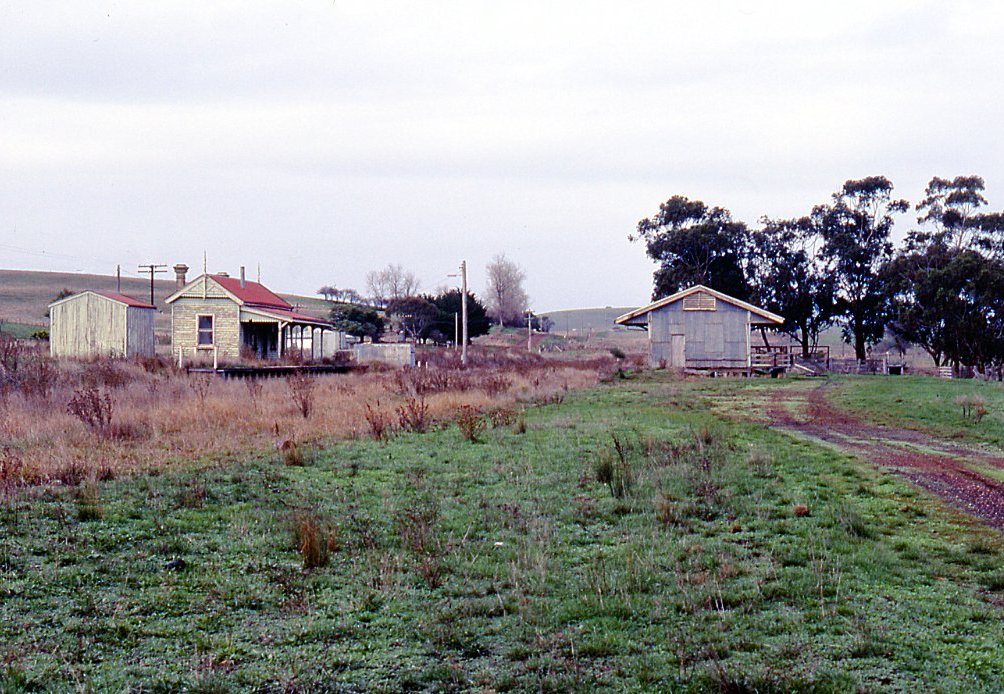
ABOVE: Only eight months after closure of the line in September 1977 nature is rapidly overtaking the station environs at Merino and it is a forlorn sight. May 1978. (photo courtesy Neville Gee)
GRASSDALE
1962 Grassdale signal arrangement diagram
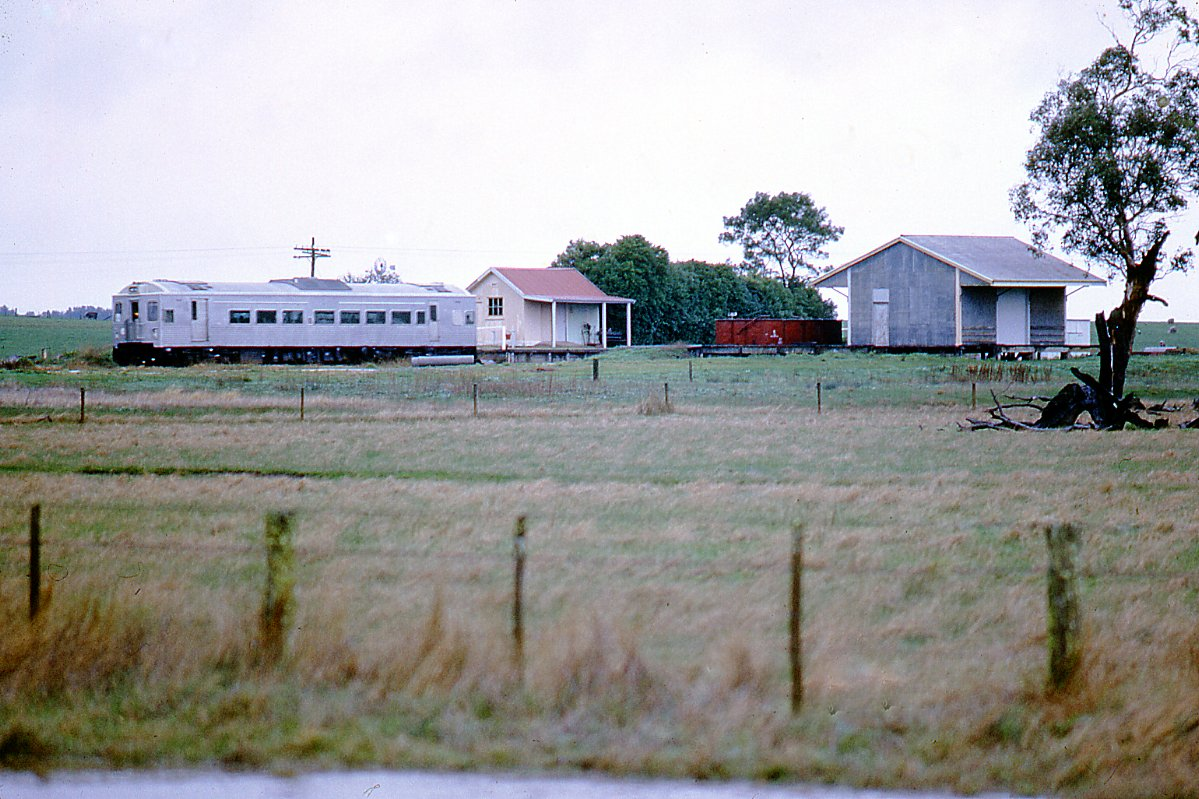
ABOVE: With the siding obviously in use, DRC 40 passes through what looks to be a well maintained little station at Grassdale, and will soon arrive back at the junction station of Branxholme, June 4 1971. (photo courtesy Neville Gee)
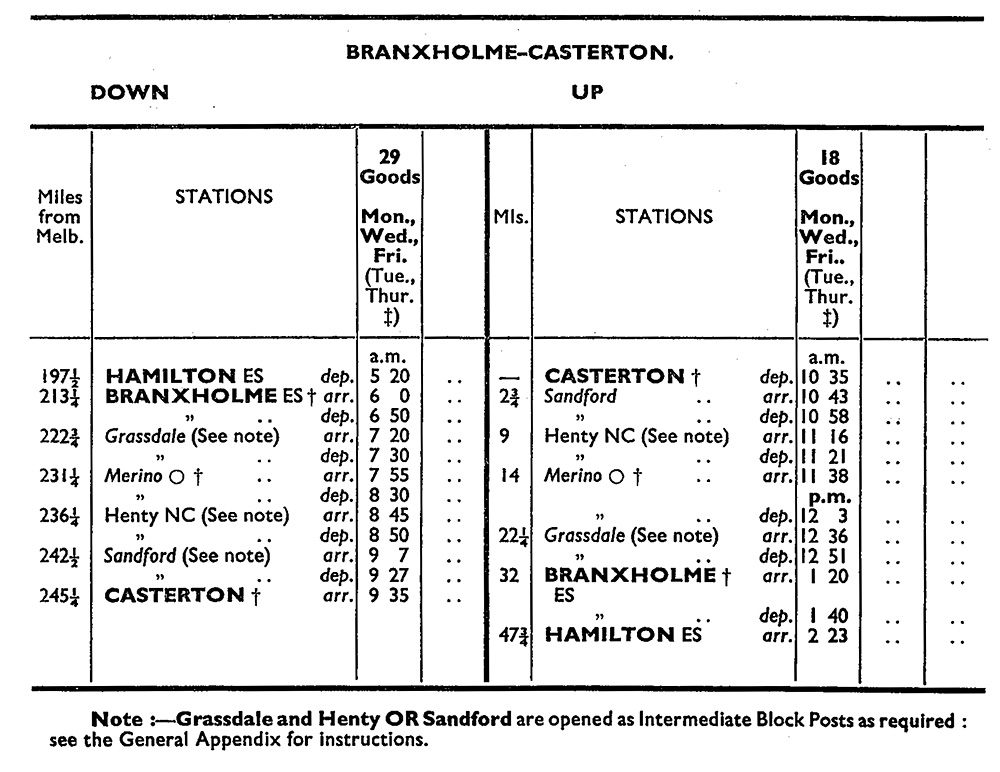
ABOVE: From the 1971 WTT.
